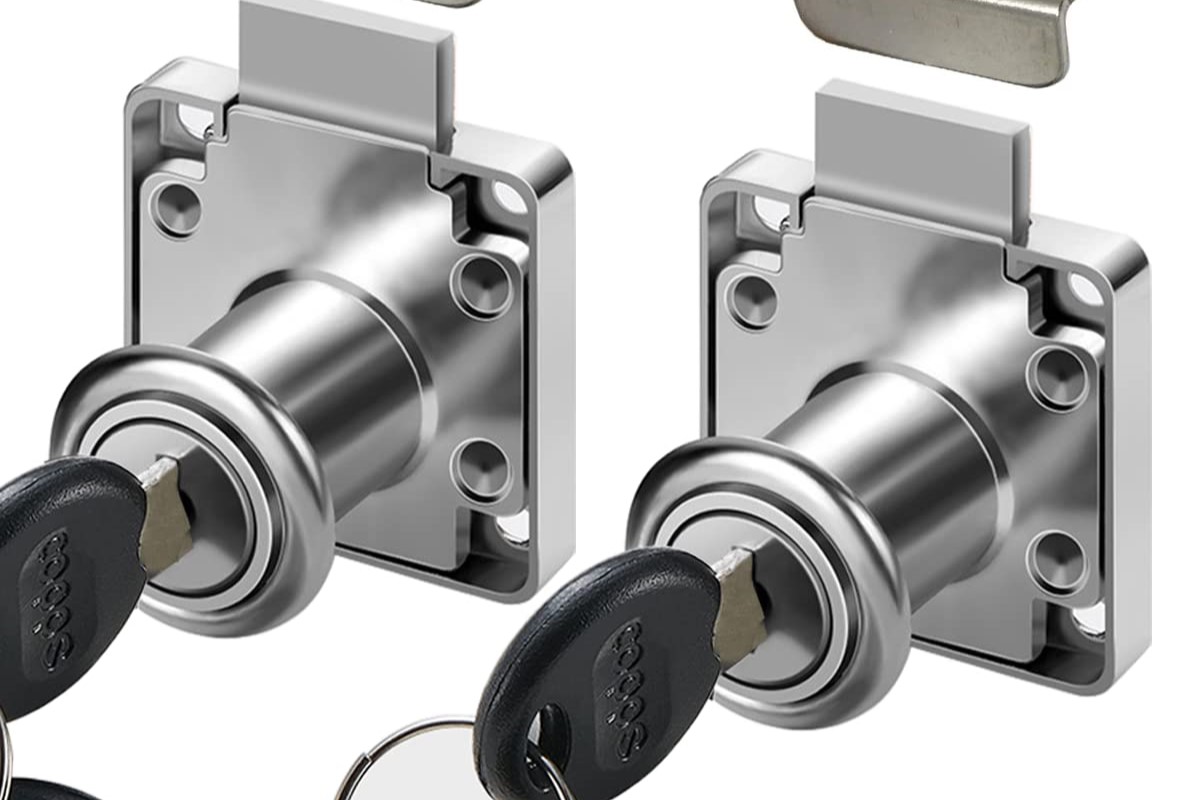
Lockalloy is a fascinating material with unique properties that make it stand out in various industries. But what exactly is Lockalloy? Lockalloy is a specialized alloy known for its exceptional strength and resistance to extreme temperatures. This makes it an ideal choice for aerospace, automotive, and even medical applications. Imagine a material that can withstand the harshest conditions while maintaining its integrity. That's Lockalloy for you! In this blog post, we'll dive into 30 intriguing facts about Lockalloy that will leave you amazed. From its composition to its uses, you'll learn everything you need to know about this incredible material.
Key Takeaways:
- Lockalloy is a super-strong and lightweight material made of aluminum and beryllium, perfect for aerospace, military, and high-performance industries. But watch out for its toxic beryllium and high production cost!
- The future of Lockalloy looks bright with advancements in manufacturing, research into alternative compositions, and improved recyclability. It's not just for airplanes and armor - it's also used in bikes, musical instruments, and even medical implants!
What is Lockalloy?
Lockalloy is a fascinating material with unique properties and a rich history. This article will explore some intriguing facts about Lockalloy, from its composition to its applications.
-
Lockalloy is an alloy primarily composed of aluminum and beryllium. This combination gives it remarkable strength and lightweight properties.
-
The name "Lockalloy" comes from the words "lock" and "alloy," indicating its use in secure and durable applications.
-
Lockalloy was first developed in the mid-20th century, during a period of rapid advancements in materials science.
-
This alloy is known for its high stiffness-to-weight ratio, making it ideal for aerospace and military applications.
-
Lockalloy has a melting point of around 1,280 degrees Celsius, significantly higher than pure aluminum.
Unique Properties of Lockalloy
Lockalloy stands out due to its unique properties, which make it suitable for various specialized uses.
-
One of the most notable properties of Lockalloy is its excellent thermal conductivity, which is beneficial in heat dissipation applications.
-
Despite its strength, Lockalloy is relatively easy to machine, allowing for precise manufacturing of complex components.
-
The alloy exhibits excellent corrosion resistance, even in harsh environments, making it durable over long periods.
-
Lockalloy has a low density, approximately 2.1 grams per cubic centimeter, which is about one-third the density of steel.
-
It is non-magnetic, which is advantageous in applications where magnetic interference must be minimized.
Applications of Lockalloy
Lockalloy's unique properties make it suitable for a wide range of applications, particularly in high-performance fields.
-
In the aerospace industry, Lockalloy is used in the construction of aircraft components, such as fuselage frames and wing spars.
-
The military employs Lockalloy in the manufacturing of lightweight armor and structural components for vehicles and equipment.
-
Lockalloy is also used in the production of satellite components, where its strength and low weight are critical.
-
In the automotive industry, Lockalloy is utilized in high-performance vehicles to reduce weight and improve fuel efficiency.
-
The electronics industry benefits from Lockalloy's thermal conductivity, using it in heat sinks and other cooling solutions.
Challenges and Considerations
While Lockalloy offers many advantages, there are also challenges and considerations associated with its use.
-
Beryllium, a key component of Lockalloy, is toxic and requires careful handling during manufacturing and machining.
-
The cost of producing Lockalloy is relatively high, limiting its use to applications where its unique properties are essential.
-
Recycling Lockalloy can be challenging due to the presence of beryllium, which requires specialized processes.
-
Despite its corrosion resistance, Lockalloy can still be susceptible to certain types of chemical attacks, necessitating protective coatings in some environments.
-
The availability of beryllium is limited, which can impact the supply and cost of Lockalloy.
Future of Lockalloy
Research and development continue to explore new ways to enhance and utilize Lockalloy.
-
Advances in manufacturing techniques are making it easier to produce Lockalloy components with greater precision and efficiency.
-
Researchers are investigating alternative alloy compositions that could offer similar properties without the drawbacks of beryllium.
-
The development of new protective coatings could further enhance Lockalloy's resistance to chemical attacks.
-
As demand for lightweight, high-strength materials grows, Lockalloy's applications are likely to expand into new industries.
-
Ongoing studies aim to improve the recyclability of Lockalloy, making it more sustainable for future use.
Interesting Tidbits about Lockalloy
Here are some lesser-known facts that highlight the versatility and impact of Lockalloy.
-
Lockalloy has been used in the construction of high-performance bicycles, offering a lightweight yet strong frame material.
-
Some musical instruments, such as high-end flutes, incorporate Lockalloy for its acoustic properties and durability.
-
The alloy has been tested for use in medical implants, where its biocompatibility and strength are advantageous.
-
Lockalloy's unique properties have even found applications in the sports industry, including lightweight equipment for athletes.
-
The development of Lockalloy has inspired further research into other high-performance alloys, pushing the boundaries of materials science.
Final Thoughts on Lockalloy
Lockalloy, a fascinating material, has revolutionized various industries with its unique properties. Its exceptional strength and resistance to corrosion make it indispensable in aerospace, automotive, and medical fields. The alloy's ability to withstand extreme temperatures ensures reliability in critical applications. Moreover, its lightweight nature contributes to fuel efficiency and overall performance in transportation sectors.
Understanding these facts about Lockalloy highlights its importance in modern technology. From enhancing safety in aircraft to improving medical implants, this material continues to play a crucial role. As advancements in materials science progress, Lockalloy's potential applications will likely expand, further cementing its place in innovation.
In essence, Lockalloy's remarkable characteristics make it a cornerstone in many technological advancements. Its continued development promises even greater contributions to various fields, showcasing the ever-evolving nature of material science.
Frequently Asked Questions
Was this page helpful?
Our commitment to delivering trustworthy and engaging content is at the heart of what we do. Each fact on our site is contributed by real users like you, bringing a wealth of diverse insights and information. To ensure the highest standards of accuracy and reliability, our dedicated editors meticulously review each submission. This process guarantees that the facts we share are not only fascinating but also credible. Trust in our commitment to quality and authenticity as you explore and learn with us.


